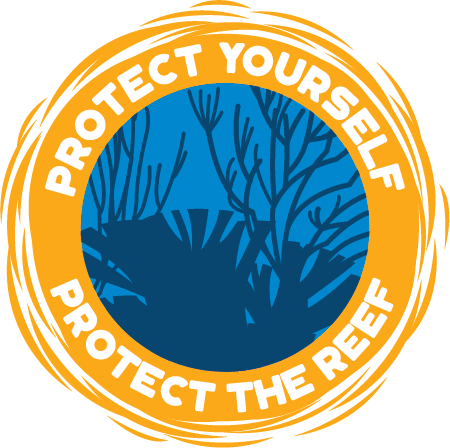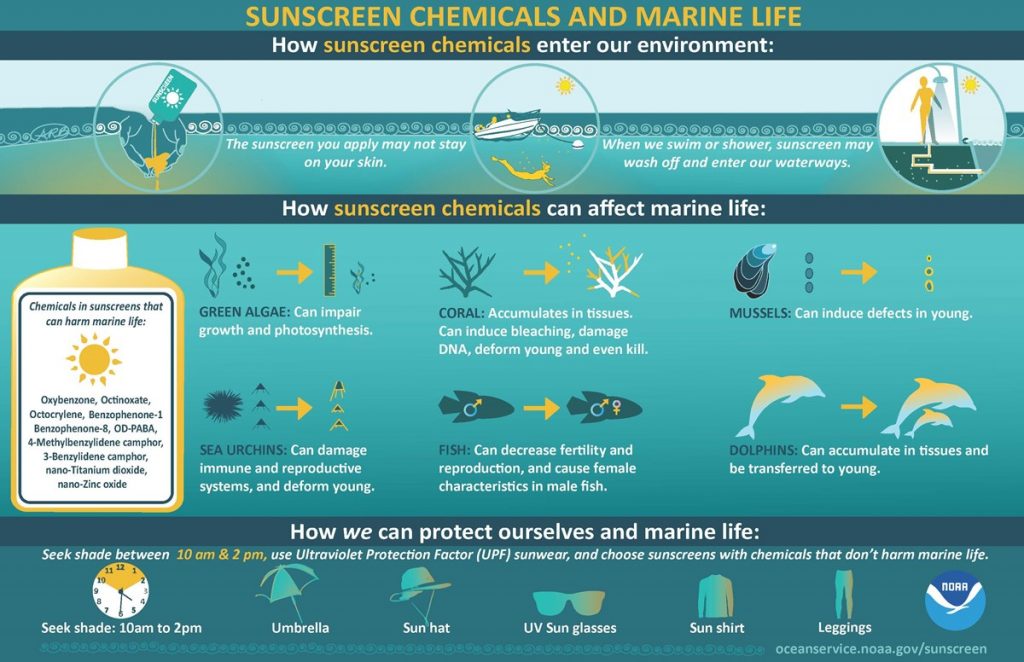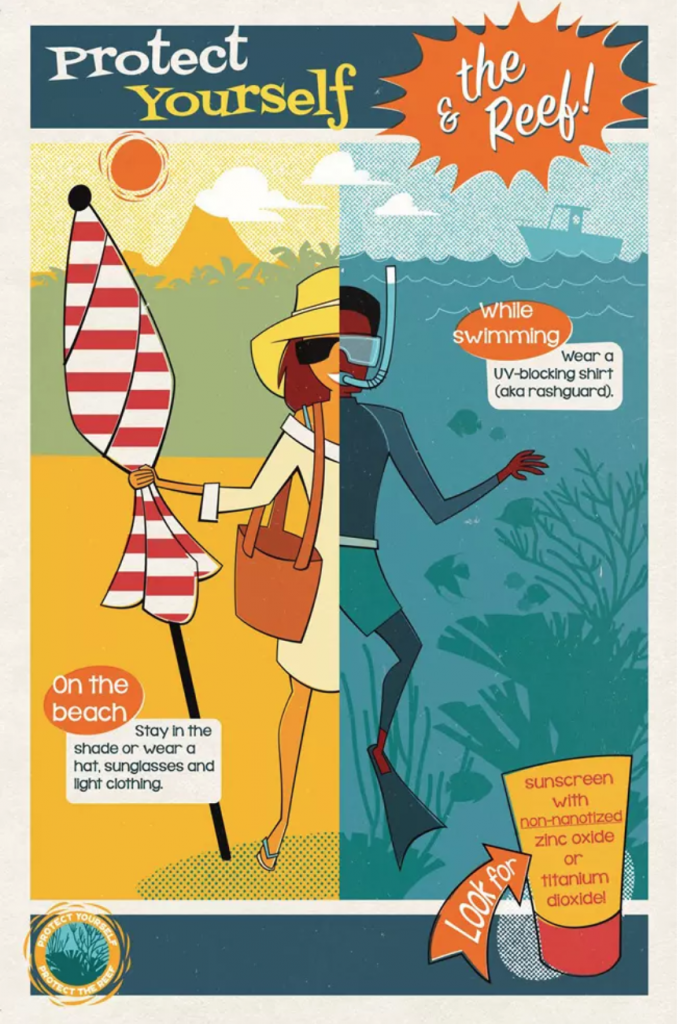From : https://www.nps.gov/puho/learn/nature/protectyourselfprotectthereef.htm
Did you know that many chemicals found in sunscreens are harmful to coral reefs and ocean life? It is estimated that every year 4,000 to 6,000 tons of sunscreen wash off swimmers into oceans worldwide and that ten percent of coral reefs are threatened by sunscreen-induced bleaching. Help protect yourself and protect the reef by always choosing reef-friendly sun protection. On this page, learn what chemicals are harmful, why they are harmful, how to choose reef-friendly sun protection, and find external resources for more information.

Harmful Sunscreen Chemicals
The State of Hawaiʻi was the first state in the nation to ban the sale of sunscreens with chemicals harmful to ocean corals. The law went into effect January 1, 2021, but some harmful products are still available. Please do your part to protect our ocean’s coral reefs by not using sunscreens with the following chemicals:
Avoid these chemicals : Oxybenzone, Octocrylene, Avobenzone, Benzophenone-1, Benzophenone-8, OD-PABA, 4-Methylbenzylindene camphor, 3-Benzylidene camphor, Homosalate, Octinoxate, Octisalate, and Nanoparticles.
Look for these active ingredients : Zinc Oxide & Titanium Dioxide
Not going swimming? Don’t live near the ocean? It is still important to make the choice to use reef-friendly sunscreens. Everything in our global ecosystem is connected. When you rinse your sunscreen off in the shower, once it goes down the drain, do you know where it goes? Unfortunately, it is likely to ultimately end up in our groundwater or freshwater streams. And where do those streams lead… to the ocean!
Effects in the Oceans
The National Park Service and research organizations around the world conduct water sampling in our world’s oceans. High concentrations of chemicals found in sunscreens, such as oxybenzone and avobenzone, have been found in the waters surrounding coral reefs as a result of sunscreen washing off swimmers and ocean recreators. Research is showing that these chemicals can harm coral health and reproduction, potentially contributing to the decline of coral reefs.
Impacts to corals include:
- DNA damage
- Deformities in coral planula (embryos)
- Stress to coral colonies that can induce bleaching (weakening and possible coral death from loss of symbiotic algae)
- Accumulation of chemicals in tissues
But the effects of chemical-based sunscreens don’t stop with corals. The coral reef ecosystem is a diverse and dynamic environment. When one part of the coral reef environment is harmed, the entire ecosystem is affected. For example, sunscreen chemicals can affect the growth and photosynthesis in green algae and seaweeds. These are primary food sources for our beloved sea turtles so, due to chemical-based sunscreen, our turtles are even more threatened.

How to Choose Reef-Friendly Sun Protection
With confusing chemical names and “green washing” (companies claiming their sunscreens are reef-friendly or reef-safe, when they really aren’t) choosing reef-friendly sun protection can be a difficult task, but we’re here to help!
The best way to help protect yourself and protect the reef is to stay in the shade or cover up. A wide variety of lightweight clothing with an Ultraviolet Protection Factor (UPF) is available in today’s market. Sun protective clothing comes in many shapes and sizes such as hats, rash guards, wraps, board shorts, leggings, and more!
However, if you prefer sunscreen rather than covering up, you can make an ocean-conscious choice too! Look for mineral-based sunscreens with Zinc oxide or Titanium dioxide made without nanoparticles (not the spray kind). When in doubt, check the ingredients list to make sure none of the harmful chemicals listed above are in your sunscreen.

How to Dispose of Environmentally Unsafe Sunscreens
Have environmentally unsafe, chemical-based sunscreen? It’s important that you dispose of them properly so that those harmful chemicals don’t ultimately make their way into the oceans. The best way of finding out how to do this is to call your local solid waste management provider and ask if they have a program for the safe disposal of chemical-based sunscreens.